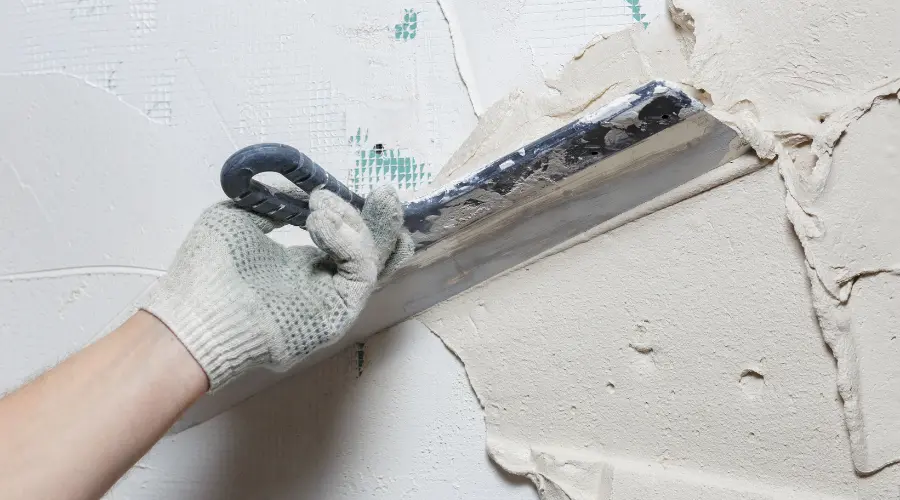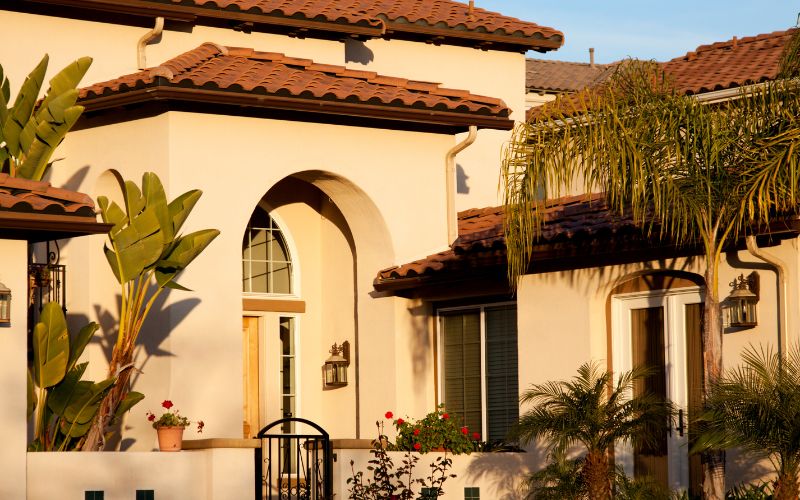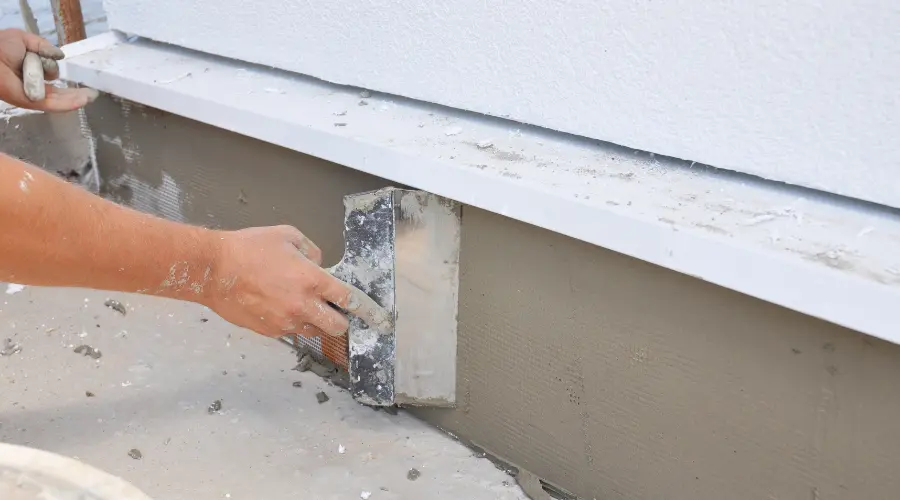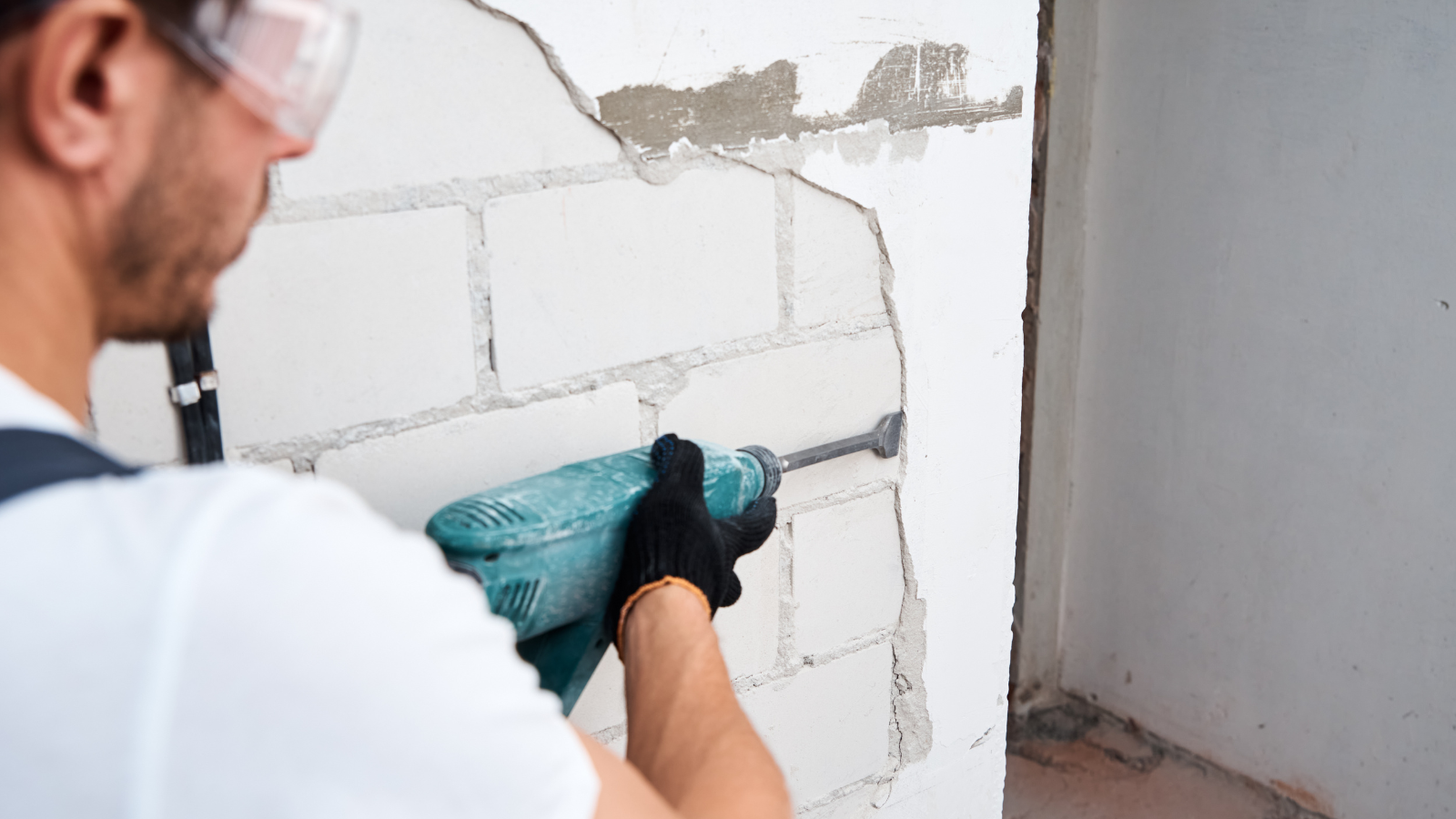Stucco is a timeless and durable exterior material, yet regular maintenance is crucial to avoid costly repairs and keep it looking great. Homeowners can preserve stucco’s durability and aesthetic appeal by adopting routine cleaning and repair practices.
Key Takeaway
- Stucco is a resilient and appealing finish that enhances a home’s curb appeal, but regular upkeep is essential to keep it in optimal condition.
- Simple maintenance, timely repairs, and professional inspections can prevent costly damage and extend stucco’s life.
Indoor vs. Outdoor Stucco Maintenance
Although both indoor and outdoor stucco benefit from maintenance, outdoor stucco needs more attention due to its exposure to varying weather conditions. Here’s a look at their differences:
1. Indoor Stucco:
Indoor stucco is relatively sheltered from the weather, requiring lighter maintenance. Dusting often and cleaning occasionally with a gentle, moist cloth or brush are usually sufficient.
2. Outdoor Stucco:
Outdoor stucco withstands wind, rain, sun, and temperature shifts, making it more susceptible to wear. Over time, this exposure can lead to discoloration, stains, and surface erosion, demanding periodic, more intensive cleaning.
Regular Cleaning Tips
Regularly cleaning stucco is one of the best ways to preserve its appearance and prevent grime from embedding into the surface.
1. Indoor Cleaning:
Use a soft-bristled brush oradamp towel to remove dust and little dirt. Avoid harsh chemicals that may damage the stucco’s finish.
2. Outdoor Cleaning:
To rinse away dirt from outdoor stucco, use a garden hose with a spray nozzle.Steer clear of high-pressure washing since it might harm the stucco surface, especially older or more fragile finishes.
Advanced Cleaning for Stubborn Stains
When dealing with tough stains like algae or mold, using a more robust cleaning solution might be necessary:
- Trisodium Phosphate (TSP): TSP effectively removes stubborn stains on stucco, but use it cautiously. Dilute it per manufacturer instructions, wear protective gloves, and thoroughly rinse the stucco afterward to prevent residue buildup.
- Commercial Stucco Cleaners: Various commercial stucco cleaning solutions are specially formulated to clean without causing damage. Opt for eco-friendly and biodegradable options to protect surrounding plants and the environment.
Repairing Damage
Even with routine maintenance, stucco can develop minor damage over time due to natural wear or physical impact.
- Small Cracks and Chips: To seal hairline cracks, use a stucco patching compound. This prevents water intrusion, which could lead to mold growth or structural issues.
- Larger Cracks and Holes: Consider consulting a professional for more substantial cracks or holes. Poorly done DIY repairs can lead to further issues and may reduce the effectiveness of stucco insulation.
- Seasonal Inspection: Regularly inspect your stucco, especially after harsh weather. Look for signs of discoloration, flaking, and any areas where the stucco may pull away from the surface.
Why is Stucco Maintenance Important?
With proper maintenance, stucco can become resistant to various issues that impact your home’s appearance and structural integrity.
- Water Damage Prevention: Stucco is somewhat porous, and cracks or damaged areas can let moisture seepinto the walls, which may result in mold development and decay. or weaken the underlying structure.
- Curb Appeal and Home Value: Stucco’s appeal can fade if dirt, stains, and damage go untreated, diminishing the home’s overall look and resale value.
- Pest Protection: Small cracks and openings in stucco can attract insects or rodents looking for an entry point. Properly sealing these vulnerabilities is essential.
- Long-Term Savings: Preventive maintenance helps avoid costly repairs or even complete stucco replacement in the long run.
How Often Should You Maintain Stucco?
Inspecting and cleaning stucco once or twice a year is generally recommended, with additional maintenance following severe weather. Minor problems can be resolved with routine maintenance before they become significant concerns.
FAQs About Stucco Maintenance
Q: How often should I clean my stucco?
A: Indoor stucco should be dusted as needed and gently cleaned every few months. Outdoor stucco typically requires cleaning once or twice a year, especially in areas exposed to heavy rain or pollution.
Q: Can I pressure wash my stucco?
A: Using a high-pressure washer is not recommended, as it can erode stucco and force moisture into cracks.Apply a spray nozzle to a garden hose instead for regular outdoor cleaning.
Q: What’s the best way to repair small stucco cracks?
A: Small cracks can be filled with a stucco patching compound. Be sure to clean the crack of dust and debris before applying the patch.
Q: How can I prevent mold and mildew on my stucco?
A: Regular cleaning, proper drainage, and removing plants that trap moisture close to stucco walls can help prevent mold and mildew growth. A mild cleaning solution or TSP can be used to remove existing mold.
Q: What should I do if my stucco has a large crack or hole?
A: A professional best handles Large cracks or holes to ensure the repair is done correctly and does not compromise the stucco’s structure.
Q: Does stucco maintenance differ based on climate?
A: Yes, stucco maintenance can vary by climate. For instance, areas with high humidity or frequent rain may require frequent inspections to prevent mold, while dry, sunny regions may cause stucco to crack or fade more quickly.
Q: Is it necessary to seal stucco?
A: Sealing stucco can add a protective layer against water and stains. Sealing every 5-10 years may be beneficial, depending on your climate.
Q: How long does stucco typically last with proper maintenance?
A: With regular maintenance and timely repairs, stucco can last 50-80 years, making it one of the longest-lasting finishes available for homes.
Q: When should I call a professional for stucco maintenance?
A: If you notice large cracks, extensive mold, or water intrusion, or if you’re unsure about handling stucco repairs, consult a professional.
Need Help with Stucco Maintenance?
If your stucco requires more than basic upkeep, consider contacting a professional. At CMB Edison Stucco & EIFS Repair, our team specializes in maintaining and restoring stucco surfaces, assisting homeowners in maintaining the aesthetic appeal and practicality of their stucco sidingTo find out more about our maintenance services, get in touch with us and keep your stucco in peak condition.
With these maintenance tips and professional support when needed, your stucco can remain resilient, beautiful, and low-maintenance for years to come. Explore our resources for more comprehensive advice on stucco care, or consider options like low-maintenance stucco finishes to enhance further and protect your home’s exterior.







